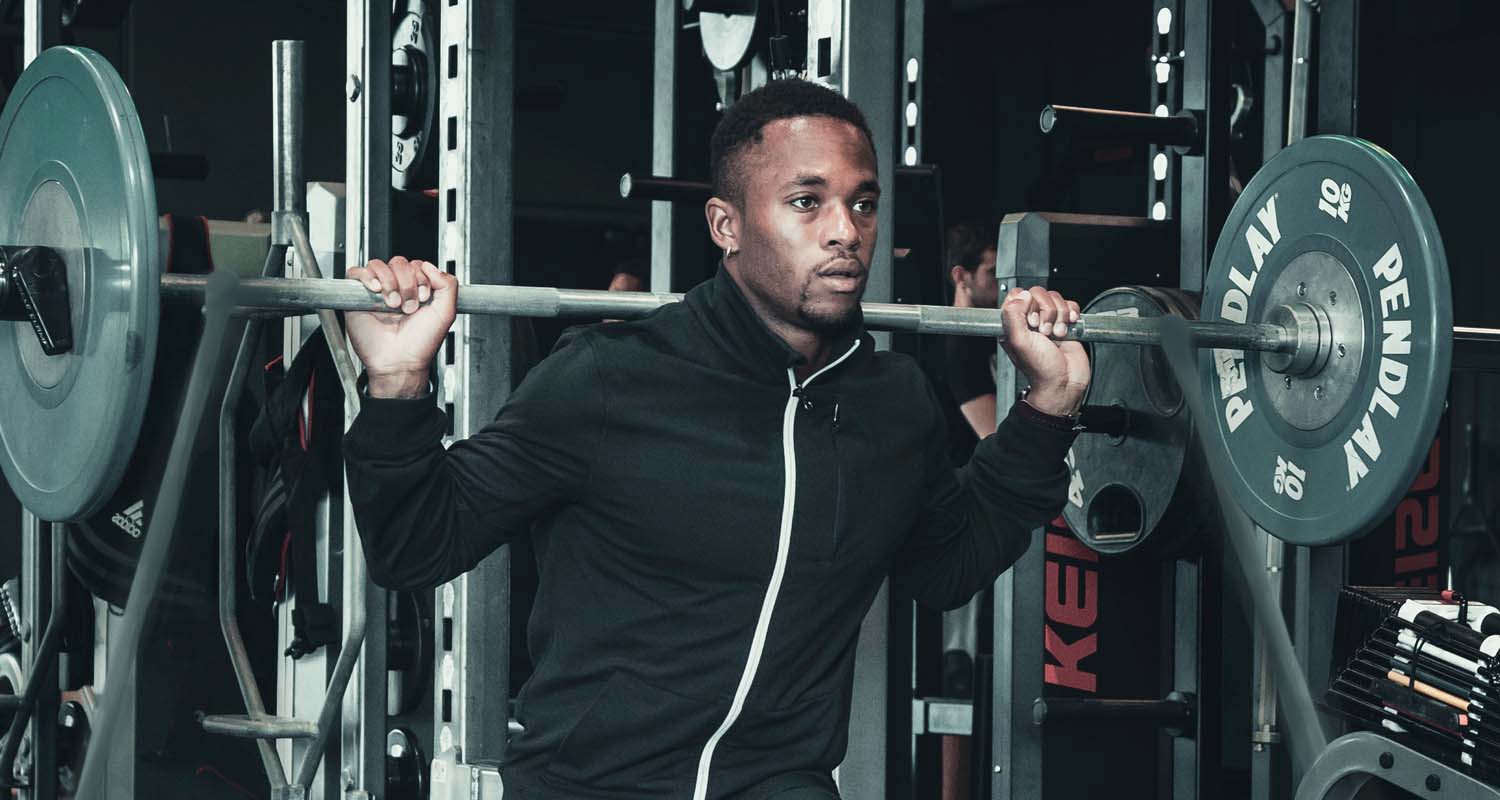
Age-related muscle loss, known as sarcopenia, happens as you get older — and it starts much earlier than you think. After the sprite age of 30, you lose as much as 3-8% of your muscle mass with each passing decade, and the decline worsens after age 60.[ref url=”https://www.ncbi.nlm.nih.gov/pmc/articles/PMC2804956/#R4″] Sarcopenia doesn’t just affect your athletic performance or how you look in a swimsuit. It also impacts your longevity. Sarcopenia, the major cause of frailty as you age, leads to falls and broken hips, and even prevents you from fully recovering after those tumbles.[ref url=”https://www.ncbi.nlm.nih.gov/pubmed/16124998″] In other words, it leaves you enfeebled as a senior, when you should be enjoying those golden years.
“You’ve got to have some type of a physical activity planned that builds up your strength so you avoid frailty. That’s probably the major driver of not just aging, but death in America. We’re not strong enough.” says Dr. Mehmet Oz, during a recent Bulletproof Radio (iTunes) podcast.
The good news is, sarcopenia is avoidable and even, to some degree, reversible, and there are plenty of ways to prevent it that don’t involve exercise (though you do need to do that, as well). Here’s how to preserve the muscle you’ve got — and get back what you’ve lost.
Move it or lose it
Exercise is a no-brainer when it comes to building muscle, but that doesn’t mean you have to live at the gym or join a CrossFit box (unless you want to). Muscle strength really comes down to daily activity. “Look around the world at places where people live a long time, and they do daily rigorous activity. That’s what you want,” says Dr. Oz. “Yoga, pilates, or lifting weights [works, but]… it could also be picking up a bucket to garden,” he explains.
First and foremost, find simple ways to add movement to your day. Garden or walk with a friend on weekends, or take a bicycle tour of your city. Bottom line: your workout should feel like play-time most of the time.
If you’ve got a desk job that keeps you sedentary Monday through Friday, explore these 5 ways to sneak movement into your workday. It could be anything from working at a standing desk or standing on a vibration plate to scheduling walking meetings or even doing a few laps around the office while taking a call (assuming you’re on your cell).
Second, add a brief, rigorous workout to your schedule once a week. HIIT (high-intensity interval training) – a unique resistance and aerobic training combination — is the key. Essentially, HIIT alternates between short bursts of strenuous exercise and active rest for 20-30 minutes. For example, you might sprint for 60 seconds, walk for 30 seconds; do push-ups for 60 seconds, walk for 30; and so on. Try this complete full-body HIIT workout routine you can do in 18 minutes.
Special note: If pain has you sidelined and keeps you from exercising, follow these quick and easy tips to fix your posture, get rid of pain, and get back on track again – all in under four minutes.
Eat more protein
Without enough protein, you can’t maintain muscle mass or bone density, and your body will become weak. As Dave talks about in “The Bulletproof Diet,” protein is so essential to survival that your body and brain possess intrinsic feedback mechanisms to keep you from eating too little or too much of it. “If you crave protein, eat more. If the thought of one more egg makes you cringe, eat less.”
Your activity level and age dictate the precise amount of protein you need to eat on a daily basis.[ref url=”https://www.ncbi.nlm.nih.gov/pubmed/16886097″] It also depends on your gender, age, and muscle-mass-to-fat ratio. Even if you’re thin, you may have high levels of fat compared to lean muscle — a sign that you may have sarcopenia.
Indeed, there are people who are aging and combating muscle wasting who need to eat more than 20 percent of their daily calories from protein — the gold standard of the Bulletproof Diet. If you have sarcopenia or wish to prevent it, 25–30 grams of high-quality protein per meal is a good starting point, though note that eating carbs with protein can deter protein synthesis.[ref url=”https://www.ncbi.nlm.nih.gov/pmc/articles/PMC2760315/”]
Make sure too, that as you up your protein intake, you consume the best protein sources available to you. Good Bulletproof protein options are low-mercury fish, grass-fed beef and lamb, pastured eggs, hydrolyzed collagen, gelatin, and clean whey concentrate. Specifically, you want to consume leucine, which preserves body muscle[ref url=”https://academic.oup.com/jn/article/136/2/533S/4664398″], and it’s found in higher amounts in the animal foods listed above.
You may be wondering how plant proteins fit into the mix. Well, in the case of sarcopenia, they really don’t. In a recent Instagram post, functional medicine doctor Mark Hyman shared that you have to eat three cups of beans (with 100 grams of carbs) to equal six ounces of animal protein (which contains zero carbs). “Plant proteins contain very little leucine, the rate limiting amino acid needed to build muscle. Animal protein is the best source of protein and is especially important as we get older, where muscle loss is the single biggest cause of rapid aging and disease,” says Hyman.
Consume omega-3 fatty acids
Ward off sarcopenia by consuming omega-3 fatty acids because they speed up protein metabolism in your body.[ref url=”https://www.ncbi.nlm.nih.gov/pubmed/25994567″] Eat your omega-3s in the form of wild salmon and grass-fed beef or supplement with low-mercury fish (or krill) oil. Research[ref url=”https://academic.oup.com/ajcn/article/102/1/115/4564326″] shows that in a matter of six months, you can increase your muscle mass by 3.6 percent with fish oil. Work with a functional medicine doctor to find the right dose.
Balance your hormones
Hormone regulation is a key component to managing muscle mass. Estrogen preserves muscle[ref url=”https://www.ncbi.nlm.nih.gov/pmc/articles/PMC4261347/”]; testosterone builds muscle[ref url=”https://www.ncbi.nlm.nih.gov/pmc/articles/PMC4112698/”]; and growth hormones contribute to muscular performance — all of which assist to combat sarcopenia.[ref url=”https://www.ncbi.nlm.nih.gov/pubmed/24300031″][ref url=”https://www.ncbi.nlm.nih.gov/pmc/articles/PMC2938029/”] You want to be certain all three hormones are performing properly and in balance. You can do this by getting your hormone levels checked, then working with your doctor to rebalance anything that is out of whack.
The general rule of thumb is to start checking your hormone levels at age 40. However, hormone levels are particularly important to assess if you are a woman in your postmenopausal years because any hormonal imbalance will affect your muscle loss most.[ref url=”https://www.ncbi.nlm.nih.gov/pmc/articles/PMC2938029/”]
Depending on your age and condition, your doctor may also recommend hormone replacement therapy. If you want to hack your hormones naturally, check out this Bulletproof video with John Gray, author of “Men are from Mars, Women are from Venus,” with solutions like eating superfoods and balancing your blood sugar.
Related: What I Learned From Taking Testosterone For A Decade
Biohack your muscles with variable resistance training
One quick and dirty way to combat muscle loss, called variable resistance training (VRT), actually changes the amount of muscle mass you possess.[ref url=”https://www.thieme-connect.com/products/ejournals/abstract/10.1055/s-2007-1024942″] In VRT, differing degrees of force are applied to a target muscle to create constant resistance. Take a VRT arm curl, for instance: the force applied through bands or chains to the bicep are consistent through the entire trajectory of the movement. The goal is to achieve maximum muscular engagement through the entire movement, which increases power and mass.
In this Bulletproof Radio (iTunes) podcast with Dr. John Jaquish, PhD, who develops biotechnology devices to increase bone density, strengthen muscles, and improve stability while reducing injury risk, you can learn about a certain kind of “cheat pushup” that’ll prompt your muscles to grow. “Get in a pushup position. Start doing pushups. When you can’t do them, drop to your knees. Then put your knees on the ground and push away from yourself,” offers Jaquish. Now listen to the podcast for more on how to cheat your way to greater muscle mass.















